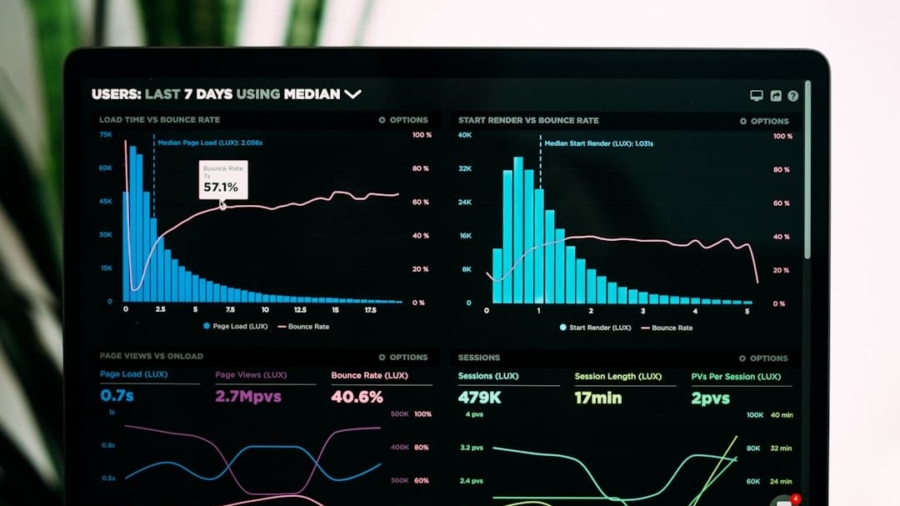Predictive analytics has emerged as a transformative force in the realm of software user experience (UX) design. By harnessing the power of data, organizations can glean insights into user behavior, preferences, and trends, allowing them to create more intuitive and engaging interfaces. This analytical approach goes beyond traditional methods of user research, which often rely on surveys and focus groups.
Instead, predictive analytics utilizes historical data and advanced algorithms to forecast future user actions, enabling designers to make informed decisions that enhance the overall user experience. The integration of predictive analytics into software UX design is not merely a trend; it represents a paradigm shift in how designers approach their craft.
This data-driven approach empowers designers to create experiences that are not only aesthetically pleasing but also functionally relevant. By anticipating user needs and preferences, organizations can foster greater user satisfaction and loyalty, ultimately driving business success.
Key Takeaways
- Predictive analytics plays a crucial role in software UX design by helping to understand user behavior and preferences.
- Leveraging predictive analytics allows for personalized user experiences, leading to higher user satisfaction and engagement.
- Predictive analytics can be used to anticipate and address user pain points, leading to improved user retention and loyalty.
- Software UX design can be enhanced with predictive analytics-driven recommendations, providing users with relevant and timely suggestions.
- Predictive analytics can be utilized for A/B testing and iterative design, allowing for data-driven decision making and continuous improvement in UX design.
Understanding User Behavior and Preferences through Predictive Analytics
At the core of predictive analytics is the ability to understand user behavior and preferences through data analysis. By collecting and analyzing data from various sources—such as user interactions, click patterns, and demographic information—designers can develop a comprehensive understanding of how users engage with their software. For instance, a mobile app that tracks user interactions can reveal which features are most frequently used, how long users spend on specific tasks, and where they tend to drop off.
This information is invaluable for identifying areas that require improvement or enhancement. Moreover, predictive analytics allows designers to segment users based on their behavior and preferences. By employing clustering algorithms, designers can categorize users into distinct groups, each with unique characteristics and needs.
For example, an e-commerce platform might identify a segment of users who frequently abandon their shopping carts. By understanding the common traits of this group—such as browsing habits or time spent on the site—designers can tailor interventions to address their specific concerns. This level of granularity in understanding user behavior enables more targeted design strategies that resonate with different user segments.
Leveraging Predictive Analytics to Personalize User Experiences
Personalization is a key component of modern software UX design, and predictive analytics plays a pivotal role in achieving this goal. By analyzing user data, designers can create personalized experiences that cater to individual preferences and behaviors. For instance, streaming services like Netflix utilize predictive analytics to recommend content based on users’ viewing history and ratings.
This not only enhances user engagement but also increases the likelihood of users returning to the platform for more tailored recommendations. In addition to content recommendations, predictive analytics can inform various aspects of the user interface (UI). For example, an online retailer might use predictive models to display personalized product suggestions on the homepage based on a user’s previous purchases and browsing history.
This approach not only improves the relevance of the displayed products but also streamlines the shopping experience, making it easier for users to find items they are likely to purchase. By leveraging predictive analytics for personalization, organizations can create a more engaging and satisfying user experience that fosters long-term loyalty.
Using Predictive Analytics to Anticipate and Address User Pain Points
Identifying and addressing user pain points is crucial for enhancing software UX design, and predictive analytics provides valuable insights into these challenges. By analyzing user feedback, support tickets, and interaction data, designers can pinpoint common issues that users encounter while using the software. For instance, if data reveals that a significant number of users struggle with a particular feature or task, designers can prioritize improvements to that area.
Predictive analytics also enables proactive measures to mitigate potential pain points before they escalate. For example, if an application tracks user engagement metrics and identifies a decline in usage over time, designers can investigate the underlying causes. This might involve analyzing user feedback or conducting usability tests to uncover specific frustrations.
By addressing these issues early on, organizations can prevent users from abandoning the software altogether. The ability to anticipate user pain points through predictive analytics not only enhances the overall experience but also demonstrates a commitment to continuous improvement.
Enhancing Software UX Design with Predictive Analytics-Driven Recommendations
The application of predictive analytics extends beyond understanding user behavior; it also informs design recommendations that enhance the overall UX. By utilizing machine learning algorithms, designers can generate actionable insights that guide design decisions. For instance, A/B testing can be optimized using predictive models that forecast which design variations are likely to perform better based on historical data.
Consider a scenario where a software company is redesigning its dashboard interface. By analyzing past user interactions with different dashboard layouts, predictive analytics can help identify which elements are most effective in driving user engagement. Designers can then prioritize these elements in the new design, ensuring that the final product aligns with user preferences.
This data-driven approach not only streamlines the design process but also increases the likelihood of creating an interface that resonates with users.
Predictive Analytics for A/B Testing and Iterative Design
A/B testing is a fundamental practice in UX design that allows designers to compare two or more variations of a design element to determine which performs better. Predictive analytics enhances this process by providing insights into which variations are likely to yield the best results based on historical data. For example, if a designer is testing two different call-to-action buttons on a website, predictive models can analyze past click-through rates and conversion metrics to forecast which button is likely to drive more engagement.
Moreover, predictive analytics facilitates iterative design by enabling designers to make data-informed decisions throughout the development process. Instead of relying solely on intuition or subjective opinions, designers can leverage predictive insights to refine their designs continuously. This iterative approach not only improves the quality of the final product but also fosters a culture of experimentation within design teams.
By embracing A/B testing powered by predictive analytics, organizations can create more effective designs that resonate with users.
The Future of Software UX Design: Predictive Analytics and Machine Learning
As technology continues to evolve, the future of software UX design will increasingly rely on predictive analytics and machine learning capabilities. The integration of these technologies will enable designers to create even more sophisticated and responsive user experiences. For instance, machine learning algorithms can analyze vast datasets in real-time, allowing for dynamic adjustments to the user interface based on current user behavior.
Imagine a scenario where a mobile app adapts its layout based on how users interact with it throughout the day. If data indicates that users prefer certain features during specific times—such as shopping in the evening or checking news updates in the morning—the app could automatically adjust its interface to highlight those features at relevant times. This level of adaptability will not only enhance user satisfaction but also position organizations as leaders in delivering cutting-edge experiences.
Ethical Considerations and Challenges in Utilizing Predictive Analytics for Software UX Design
While predictive analytics offers numerous benefits for software UX design, it also raises ethical considerations and challenges that must be addressed. One significant concern is user privacy; as organizations collect and analyze vast amounts of personal data, they must ensure that they are transparent about how this data is used and protected. Users should have control over their data and be informed about what information is being collected and for what purposes.
Additionally, there is the risk of bias in predictive models that could lead to unfair or discriminatory outcomes. If historical data reflects societal biases, these biases may be perpetuated in the predictions made by algorithms. Designers must be vigilant in evaluating their data sources and ensuring that their models are fair and representative of diverse user groups.
Addressing these ethical challenges is essential for building trust with users and ensuring that predictive analytics serves as a tool for enhancing rather than hindering the user experience. In conclusion, while predictive analytics presents exciting opportunities for enhancing software UX design through personalized experiences and proactive problem-solving, it is imperative for organizations to navigate ethical considerations thoughtfully. By prioritizing transparency and fairness in their use of data-driven insights, designers can create innovative solutions that resonate with users while upholding ethical standards in their practices.
In a recent article from Hacker Noon, the importance of predictive analytics in software UX design was discussed in depth. The article highlighted how utilizing predictive analytics can greatly enhance the user experience of software products. To learn more about the latest trends and topics in the tech sector, check out Hacker Noon.
FAQs
What is predictive analytics?
Predictive analytics is the use of data, statistical algorithms, and machine learning techniques to identify the likelihood of future outcomes based on historical data.
How does predictive analytics enhance software UX design?
Predictive analytics can enhance software UX design by analyzing user behavior and preferences to anticipate their needs and provide personalized experiences. This can lead to improved user satisfaction and engagement.
What are some examples of predictive analytics in software UX design?
Examples of predictive analytics in software UX design include personalized product recommendations, dynamic content customization, and predictive search suggestions based on user behavior and historical data.
What are the benefits of using predictive analytics in software UX design?
The benefits of using predictive analytics in software UX design include improved user engagement, increased conversion rates, enhanced user satisfaction, and the ability to deliver personalized experiences at scale.
What are the challenges of implementing predictive analytics in software UX design?
Challenges of implementing predictive analytics in software UX design include data privacy concerns, the need for high-quality data, and the complexity of integrating predictive models into the design process.



